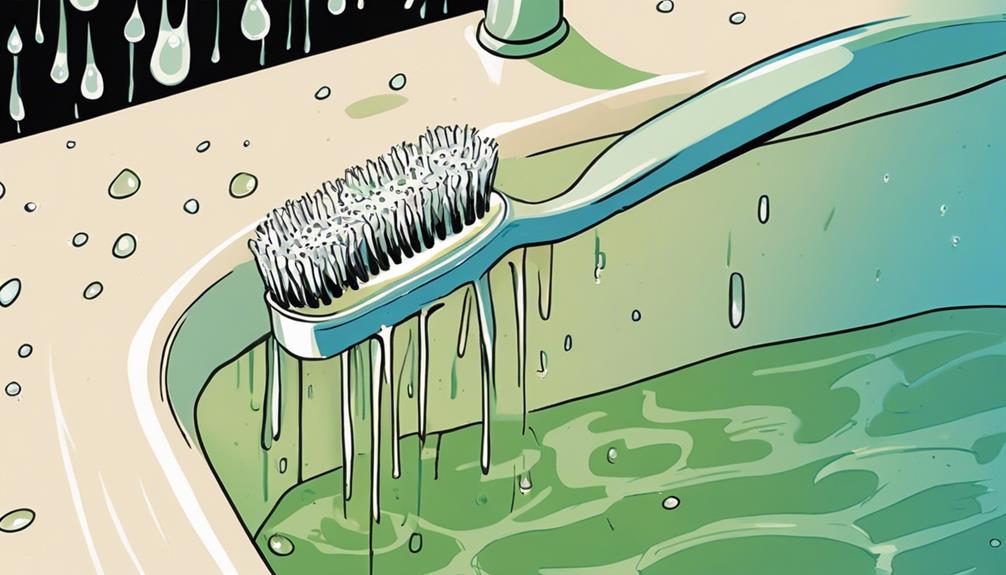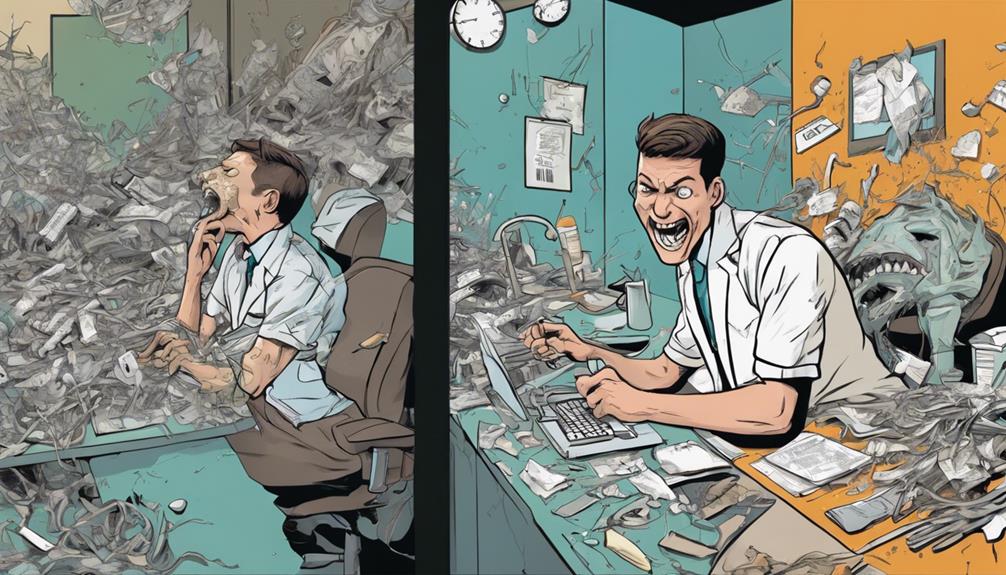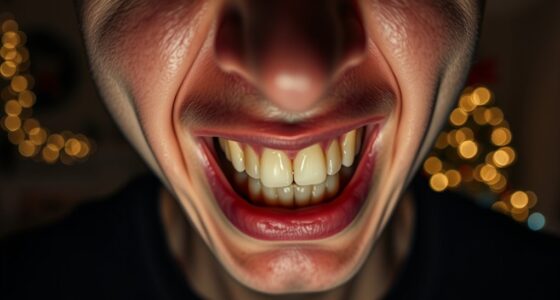You need to change your child's toothbrush more often because old brushes can harbor harmful bacteria, like E. coli and Streptococcus. These germs thrive in the moist environment after use, increasing the risk of cavities and gum disease. Plus, frayed bristles won't clean teeth effectively, allowing more plaque to build up. It's important to replace the toothbrush every 3 to 4 months or immediately after an illness to avoid reinfection. Establishing this habit not only promotes good dental hygiene now but also sets your child up for a lifetime of healthy smiles. There's more to uncover about toothbrush care and longevity.
Key Takeaways
- Toothbrushes can harbor harmful bacteria like E. coli and Streptococcus, increasing infection risk for children.
- Frayed bristles reduce cleaning effectiveness, leaving plaque that can lead to cavities and gum disease.
- Regularly changing toothbrushes minimizes exposure to pathogens, especially after illness, preventing reinfection.
- Discoloration and unpleasant odors indicate bacterial growth, signaling it's time for a replacement.
Importance of Regular Replacement
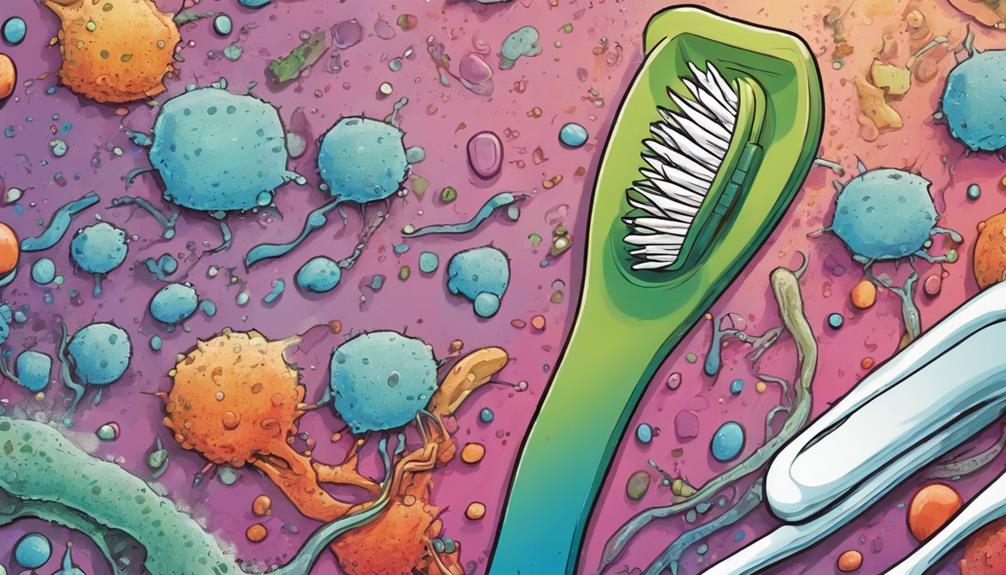
Regularly replacing your child's toothbrush every 3 to 4 months is crucial for maintaining their oral hygiene and preventing harmful bacteria buildup. Over time, toothbrushes can harbor bacteria, mold, and even fungus, especially in moist bathroom environments. This increases the risk of oral illnesses and can adversely affect your child's overall health.
Frayed or worn bristles lose their effectiveness, making it harder to remove plaque from your child's teeth. This can lead to potential dental health issues down the road. By replacing the toothbrush regularly, you're not just promoting better oral hygiene, but you're also teaching your children the importance of taking care of their teeth.
After your child recovers from any illness, it's important to replace their toothbrush to minimize the risk of reinfection from lingering germs. This simple act can make a significant difference in their health.
Encouraging this habit early on sets the foundation for a lifetime of good dental care. Ultimately, prioritizing the regular replacement of toothbrushes will help guarantee your child enjoys healthy teeth and gums as they grow.
Signs for Toothbrush Replacement
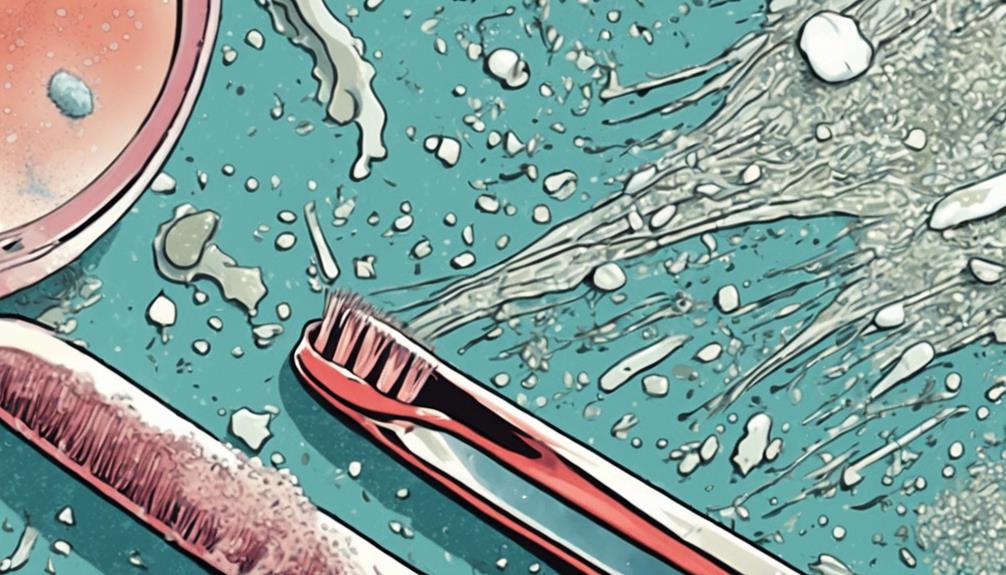
You should regularly check your child's toothbrush for frayed or worn bristles, as these are clear signs it needs replacing.
If you notice any discoloration or an unpleasant odor, that's another strong indication it's time for a new one.
Keeping an eye on these signs helps guarantee your child's oral hygiene stays on track.
Frayed or Worn Bristles
Frayed or worn bristles on a toothbrush clearly signal that it's time for a replacement to guarantee effective cleaning and plaque removal. When bristles become frayed, their ability to remove plaque diminishes, putting your child's oral health at risk. Studies show that using a worn toothbrush can lead to an increase in cavities and gum disease.
To help you recognize when to replace your child's toothbrush, check out the table below:
| Sign of Wear | Impact on Cleaning Effectiveness | Recommended Action |
|---|---|---|
| Frayed Bristles | Reduced plaque removal | Replace toothbrush |
| Worn Bristles | Less effective cleaning | Replace toothbrush |
| Broken Bristles | Incomplete cleaning | Replace toothbrush |
| Discoloration | Potential bacterial growth | Replace toothbrush |
| Odor | Indicates degradation | Replace toothbrush |
Regular replacement, ideally every three months, is essential. Remember, a toothbrush that's lost its shape can harbor harmful bacteria, making it important to check for signs of wear. Keeping your child's toothbrush in top shape guarantees effective cleaning and protects against cavities and gum disease.
Discoloration or Odor
Discoloration and odor in a toothbrush indicate it's time for a replacement to prevent harmful bacteria from impacting your child's oral hygiene. Keeping a close eye on the condition of your child’s toothbrush is important for their overall dental health. When you notice the bristles are frayed or the brush head is discolored, it’s time to swap it out for a new one. A fun toothbrush tip is to let your child pick out their own colorful, character-themed toothbrush to make the replacement process more exciting for them. This can help encourage good oral hygiene habits and make toothbrush replacement feel like a positive, fun experience.
When you notice any discoloration of the bristles, it suggests the brush is degrading and can no longer provide effective cleaning. An unpleasant odor often signals bacterial growth, which can compromise your child's oral hygiene.
Worn brushes can leave more plaque on teeth, increasing the risk of dental issues. Regularly inspecting your child's toothbrush for signs of odor or discoloration is crucial. If you find either, it's a clear signal that the brush needs replacing. Failing to do so can lead to the accumulation of harmful bacteria, posing significant health risks.
To maintain good hygiene, replace your child's toothbrush every three to four months or sooner if you notice any wear or discoloration. Keeping a close eye on these signs guarantees that your child's toothbrush remains effective and reduces the chances of dental problems.
Bacteria and Germ Concerns
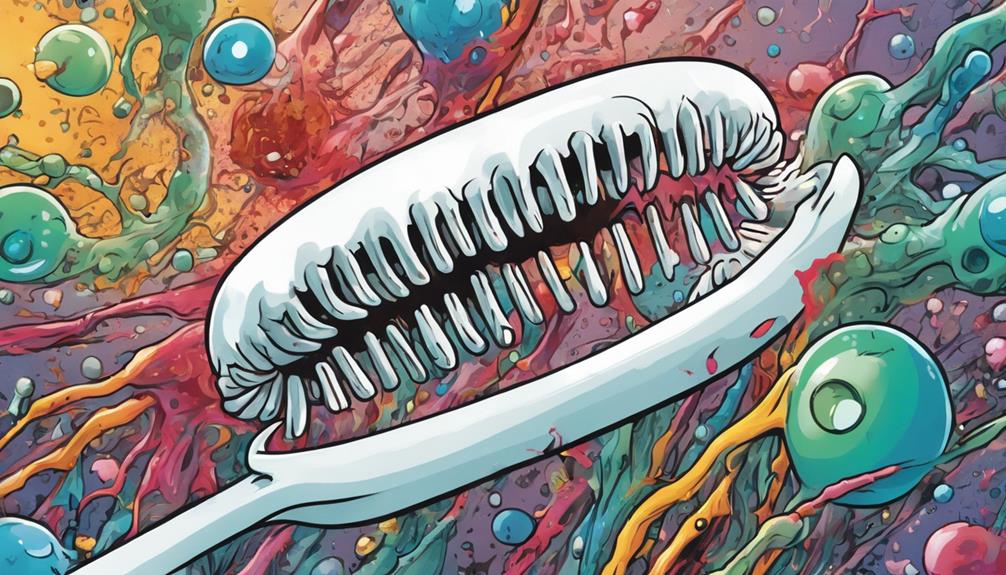
Toothbrushes can become a breeding ground for harmful bacteria and germs, posing considerable health risks for children. After each use, the moist environment of a toothbrush creates ideal conditions for bacteria like E. coli and Streptococcus to thrive. This contamination can lead to reinfection, especially if the toothbrush is used during or after an illness.
It's vital to keep your child's oral health in check by regularly replacing their toothbrush. Ideally, you should replace it every three to four months. Frayed bristles not only reduce the effectiveness of plaque removal but can also trap bacteria, compounding hygiene issues. The longer a toothbrush is used, the more likely it's to harbor harmful pathogens that can negatively impact your child's well-being.
Maintaining proper hygiene with your child's toothbrush is important. By prioritizing toothbrush replacement and monitoring for worn-out bristles, you can greatly minimize the risks of bacterial exposure. Don't overlook the importance of a clean toothbrush—it's a simple yet effective way to protect your child's health and guarantee they maintain a bright, healthy smile.
Tips for Proper Toothbrush Care

To keep your child's toothbrush in top shape, always rinse it after each use to get rid of toothpaste and debris.
Make certain to store it upright and allow it to dry to prevent moisture buildup.
Don't forget to replace the toothbrush after illness to guarantee effective cleaning every time!
Rinse After Each Use
After each use, rinsing your child's toothbrush under running water helps eliminate toothpaste residue and debris, keeping it clean and reducing bacteria growth. This simple step is essential for maintaining hygiene, as leftover toothpaste can trap moisture, creating an ideal environment for bacterial growth and even mold.
Make sure to thoroughly rinse the bristles, ensuring no debris remains that could contribute to contamination. After rinsing, it's a good idea to shake off any excess water. This reduces moisture that can lead to mold development, further protecting your child's health.
Remember, if multiple family members are using toothbrushes in close proximity, it's important to prevent cross-contamination. Keeping each toothbrush separate helps maintain a hygienic environment for everyone.
Avoid storing toothbrushes in closed containers, as this traps moisture and encourages bacterial growth.
Store Upright and Dry
Storing your child's toothbrush upright and in a dry place helps it air-dry properly, minimizing the risk of bacteria and mold growth. After each use, make certain to rinse the toothbrush under running water to remove toothpaste and food particles. This simple step prevents bacterial growth and keeps the toothbrush clean.
Before you store the toothbrush, give it a gentle shake to remove excess water. Moisture is a breeding ground for mold and bacteria, so keeping it as dry as possible is important. Place the toothbrush in a holder or cup where it can stand upright, allowing it to air-dry effectively.
It's also essential to avoid cross-contamination, so store individual toothbrushes separately, especially during times of illness. Closed containers may seem convenient, but they trap moisture, creating the perfect environment for contamination.
Replace After Illness
Replacing your child's toothbrush promptly after an illness is essential to prevent reinfection and protect their health. Even if the toothbrush seems fine, bacteria and germs can accumulate on it, posing significant health risks once your child recovers.
Experts recommend you replace toothbrushes every three months, but when illness strikes, immediate replacement is critical. Rinsing the toothbrush in hot water after use may help reduce bacteria, but it doesn't eliminate the need for timely replacement. The lingering germs can remain on the bristles, ready to reinfect your child.
To further minimize cross-contamination during illness, keep toothbrushes separate and stored upright. This simple practice can limit bacterial growth and keep your child's oral hygiene in check.
Impact on Oral Health
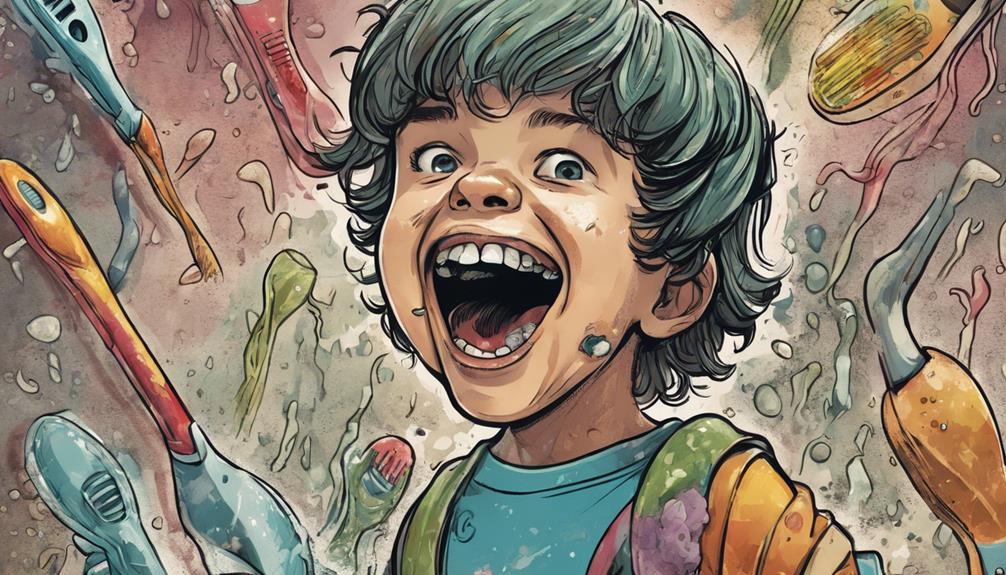
A child's toothbrush plays an essential role in maintaining their oral health, as using an old or worn brush can lead to plaque buildup and increase the risk of cavities and gum disease.
The American Dental Association recommends you replace your child's toothbrush every 3 to 4 months to guarantee that the bristles remain effective. Worn bristles can't clean teeth properly, leaving plaque behind, which can contribute to tooth decay and gum issues.
Additionally, a contaminated toothbrush can harbor harmful bacteria and germs, posing a risk to your child's overall health. If your child has been sick, it's vital to replace their toothbrush to prevent reinfection.
Studies show that frayed or matted bristles leave more plaque on teeth, undermining the benefits of regular brushing.
Establishing Healthy Habits
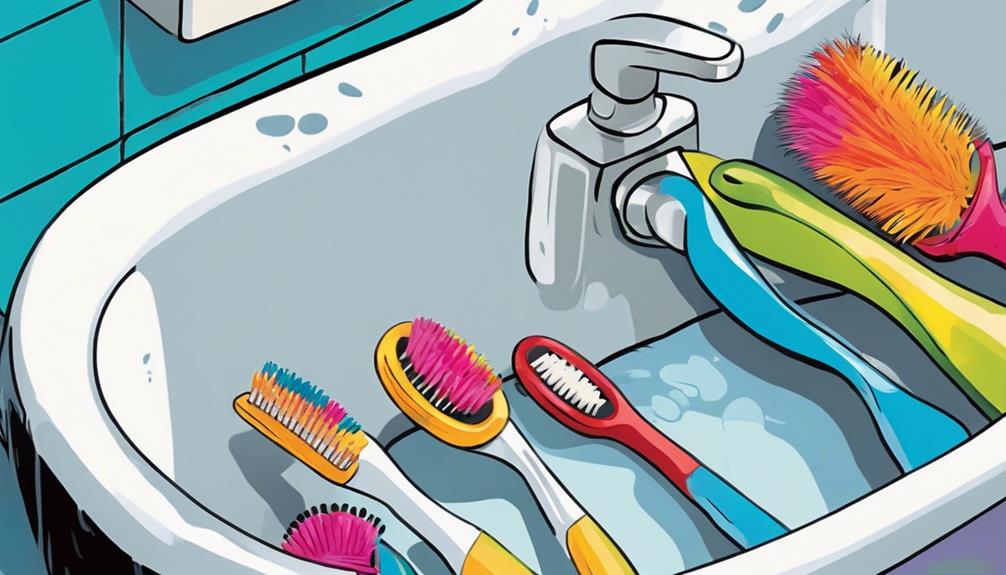
Building a routine around your child's toothbrush care sets the foundation for lifelong oral hygiene habits. Establishing these healthy habits early can make a significant difference in their dental health. Here are three key practices to incorporate:
- Regular Replacement: Get into the habit of replacing your child's toothbrush every 3 to 4 months. This reinforces the importance of maintaining effective dental hygiene and guarantees their toothbrush is always in prime condition.
- Recognizing Signs: Teach your children to recognize signs that indicate it's time for a new toothbrush. Frayed bristles or discoloration are clear signs that they need to replace it. This empowers them to take responsibility for their own oral care.
- Comprehensive Care: Encourage regular flossing in addition to brushing. This helps children understand that dental hygiene isn't just about brushing; it's about overall care for their smiles.
Frequently Asked Questions
How Often Should You Change a Child's Toothbrush?
You should change your child's toothbrush every 3 to 4 months. If the bristles are frayed or after your child's been sick, replace it sooner to maintain effective cleaning and guarantee good oral hygiene.
Why Should a Toothbrush Be Changed Regularly?
You should change a toothbrush regularly because worn bristles can't clean effectively, leading to plaque buildup. Plus, old brushes can harbor bacteria, risking your child's oral health and overall well-being. Make replacements a routine!
Why Is Sharing a Toothbrush Gross?
Sharing a toothbrush is gross because it transfers harmful bacteria and germs between individuals. Even if it looks clean, pathogens can linger, increasing your risk of infections and dental issues. It's crucial to keep your toothbrush personal.
What Happens if You Use the Same Toothbrush for a Year?
If you use the same toothbrush for a year, its bristles wear out, reducing cleaning effectiveness. You might not remove plaque properly, increasing the risk of cavities and gum disease for your child.
Conclusion
So, as you navigate the daily grind, remember that your child's toothbrush deserves a little TLC.
Just like a knight must sharpen their sword, you need to replace that toothbrush regularly to fend off the lurking bacteria.
By establishing this simple habit, you're not just fighting plaque; you're championing your child's oral health.
Embrace this small change and watch as their smiles shine brighter, warding off the dragons of dental decay.
After all, a healthy smile is a powerful weapon!
